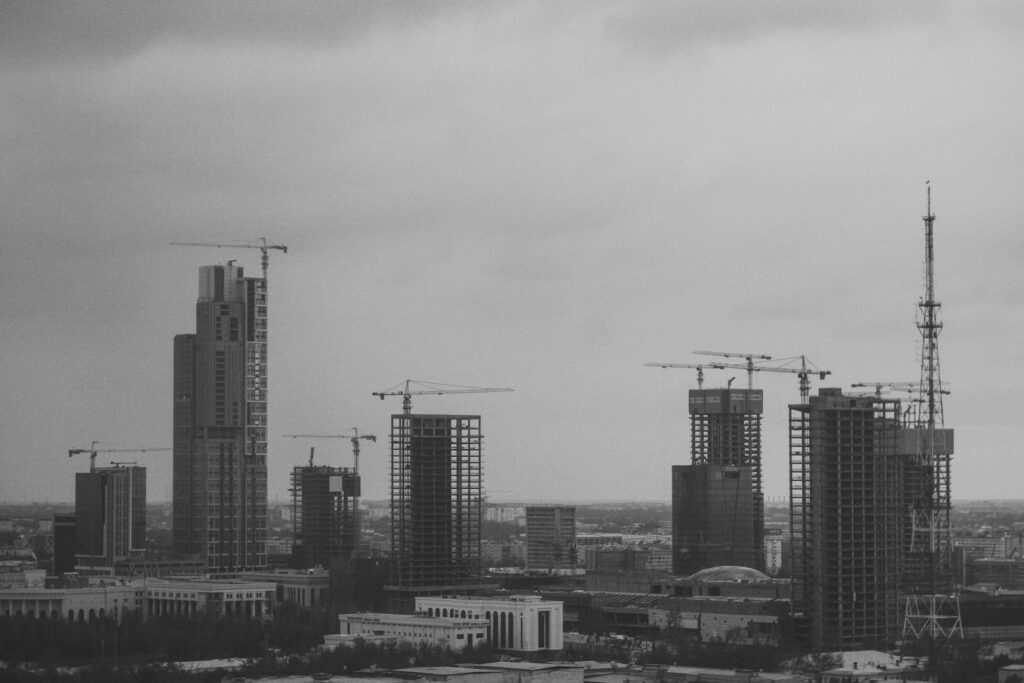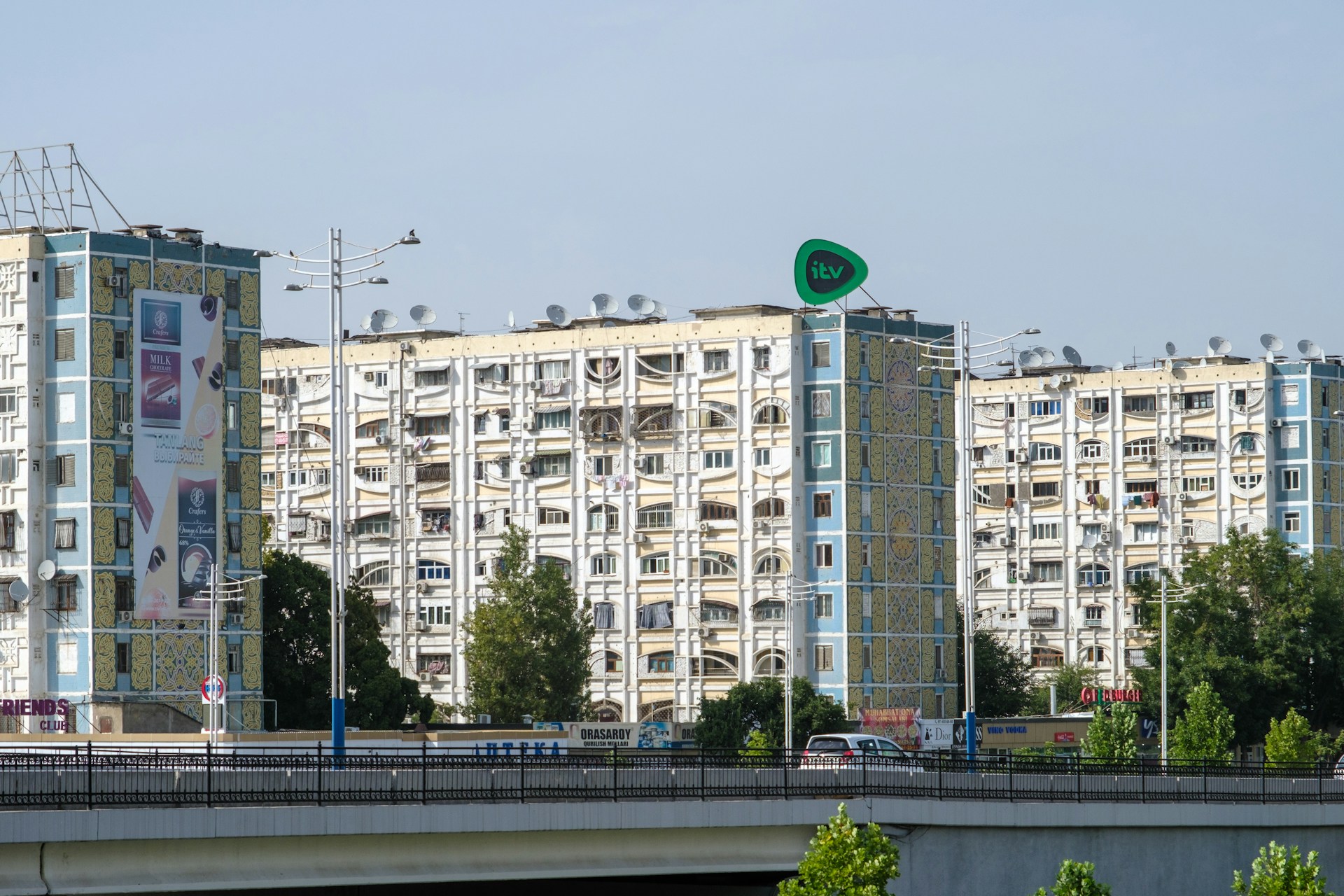Housing in Uzbekistan – An Overview
Architecture in Uzbekistan embodies the nation’s history and culture as well as the difficulties of today’s building.
Uzbekistan is one of the largest countries in Central Asia and the architecture there varies greatly depending on history, culture, and currently experienced growth of cities.
This blog looks at the current housing in Uzbekistan; urban housing, rural housing, and its future.
Traditional Housing in Uzbekistan: A Cultural Reflection
The traditional housing in Uzbekistan especially in rural setting have their own unique architectural values and techniques.
The majority of pre-Revolutionary Uzbek houses are called a “yurt” or a portable dwelling made of felt with a wood frame covered by a cloth tent roof.
Yurts are perfect for nomadic way of life and are considered to represent the history of the country.
I have seen beautifully designed houses from the older generation in the cities to have fine tile work and carved wooden work.
These homes are not only dwelling-places but also reception places, meeting points of family and friends.
A characteristic element of the layout is a central communicating court oriented on the social compass; this corresponds with a tight-knit Uzbek family hierarchy.
The newer generations are starting to gain more influence in homes but many of them like to preserve some of these homes for traditions.
Urban Development: Challenges and Opportunities
Since the country’s modernization process is in progress, focus on urban construction has itself emerged as a solution for living.
Using Tashkent, Samarkand and Bukhara as examples it can be noted that these are some of the cities with high growth rates in population and therefore densities, a factor that suggests that there is a high demand for housing.
The government has developed and introduced different measures towards this problem such as creating new apartment buildings and repair of infrastructures.
However, increased rate of urbanization comes with a number of problems.
Some of the newly constructed developments provide many numbers of building that are of poor quality that does not meet the demand of the people.
Besides, population growth especially in the urban centres has stretched infrastructure and service delivery such as transport, health and schooling.
Some of these measures include guaranteeing sustainable urban planning in order to provide adequate housing while at the same time promoting housing which brings quality life to users.

Rural Housing in Uzbekistan: Bridging Tradition and Modernity
Built kinds of houses in rural territories of Uzbekistan still underline both traditions and requirements of contemporary architecture at the same time.
Though homeowners constructing their homes still use traditional building materials and techniques, favor is shifting towards tapping into modern amenities.
This change is because of the new generation which tries to preserve its culture while also incorporating modern amenities into their lives.
The provision of proper housing for the rural populace is important to the nation’s development because about 45% of the population of Uzbekistan lives in such regions.
The government has realized the significance of developing better facilities in the rural area by providing schemes for constructing better quality living in housing and the availability of services.
However, problems like small capital and inadequate human capital remain a challenge to the progress of the business.
Future Prospects: Addressing Challenges of Housing in Uzbekistan
Ahead, there are systemic problems in housing in Uzbekistan, which should be resolved for sustainable development.
There is therefore one major issue that needs to be discussed which is environmental degradation due to urbanization.
This method of construction is characterized by deforestation, loose soils, and pollution of the environments.
In light with this, the optimal use of green practices in construction to create natural spaces in the built up areas will play a significant role in sustaining the natural environment.
Furthermore, housing services which include affordable housing solutions are needed in large quantity.
This research on housing in Uzbekistan found that as property prices rise further in urban markets low and middle income earners have no access to decent houses.
The government should therefore pay attention to affordable housing projects and also promote the investment within the residential area to help solve this problem.
Last but not the least,-extension of education and vocational training particularly in the construction industry will foster availability of the right human capital for meeting the modern housing needs.
Housing development can also be sustainable and stronger if Uzbekistan invest on people.
Conclusion
The housing in Uzbekistan could be described as an active sphere that unites both the traditional and the contemporary.
Due to these factors it is very important that while the country is experiencing the mix of urbanization and rural development, measures should be taken to observe sustainability and affordable strategies.
Faced with a great number of problems in the modern world, Uzbekistan, accepting its diverse culture and history, can create better living conditions for every inhabitant.
The market of housing in Uzbekistan has the potential, despite the fact that the problem of high interest rates, few offers, and high cost scare remain paramount to many intending homeowners.
Despite the variety of mortgage products there are, we can conclude that while main income earners remain numerous and comprise both low- and middle-income families, the choice of products that could meet their needs remains quite limited.
The initiatives taken by the government to improve accessibility and constrain the choices are positive steps in the right direction but would need more innovation and most importantly the Fin Tech and P3 approaches to be actualized to achieve inclusive housing mortgage market.
As population of Ghana extends its momentum on urbanization, these barriers to access mortgage will remain crucial for the formulation of sustainable and Inclusive housing policy interventions for the people of Ghana.
Also read: Housing Finance Development in Uzbekistan

